How to Apply Forex Signals for Scalping?

This guide explains how to apply Forex signals effectively for scalping, focusing on fast execution, precise entry points, and disciplined risk management. By using reliable signal sources and rapid decision-making, both beginners and experienced traders can optimize short-term opportunities and enhance overall consistency in high-frequency trading across market conditions.
- What are Forex Signals in Scalping?
- How Scalping works in the Forex Market
- Types of Forex Signals used for Scalping
- How to choose a reliable Forex Signal Provider for Scalping
- Setting up your Trading Platform for Scalping Signals
- How to apply Forex Signals in Real-Time trading
- Risk Management techniques for Scalping with Signals
- Common mistakes traders make when using Scalping Signals
- Tips to improve success when using Forex Scalping Signals
- Backtesting and Reviewing Scalping Signals for better results
Top 10 Forex Brokers (Globally)
1. What are Forex Signals in Scalping?
Forex signals in scalping are ultra-short-term trade alerts designed to help traders enter and exit the market quickly, often within minutes. Unlike standard Forex signals that focus on longer trends, scalping signals are built around rapid price movements, micro-trends, and precise timing.
These signals usually provide:
- Entry price
- Stop-loss level
- Take-profit target
- Timeframe (typically M1–M5)
Scalping signals rely heavily on technical indicators, fast chart analysis, and high liquidity conditions. Their main purpose is to help traders capture small, frequent profits while minimizing exposure to market volatility. They require fast execution, disciplined risk management, and a reliable trading platform to be used effectively.
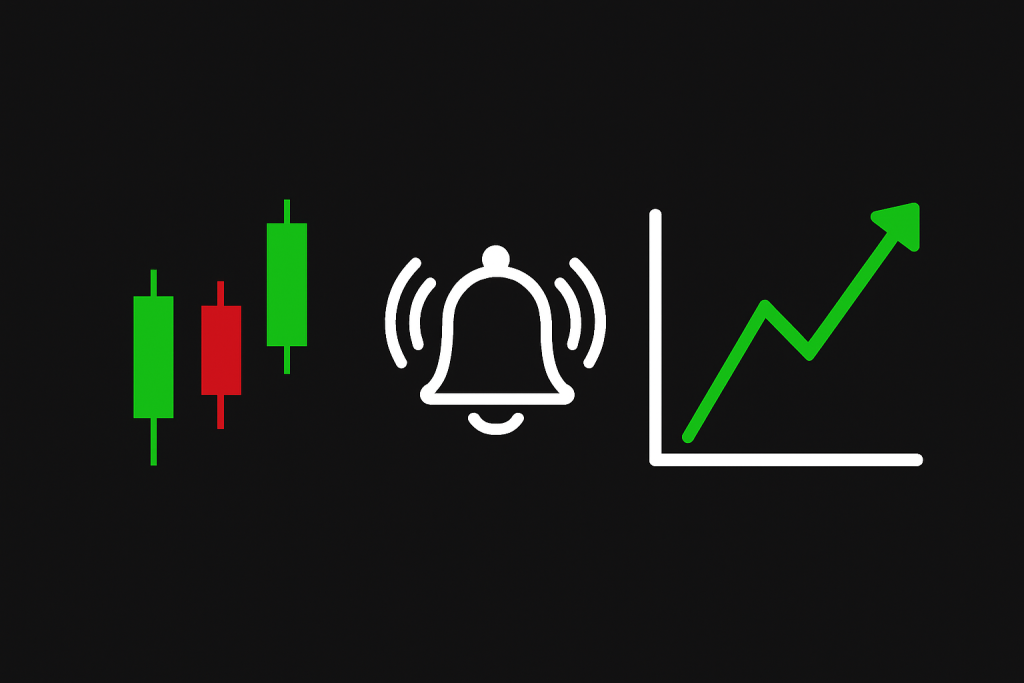
Frequently Asked Questions
Are Forex scalping signals suitable for beginners?
No, Forex scalping signals are generally not suitable for beginners. Scalping demands extremely fast execution, a low-latency connection, and strict risk management to handle rapid price shifts, making it a high-stress strategy for novices.
What timeframe is best for using scalping signals?
The best timeframes for using scalping signals are the 1-minute (M1) and 5-minute (M5) charts. These small timeframes generate signals quickly and frequently, allowing the trader to execute and close positions rapidly to capture small, fast price movements.
Pros and Cons
| ✓ Pros | ✕ Cons |
| Fast trading opportunities with frequent setups | Requires very fast execution and decision-making |
| Small profit targets reduce long market exposure | Higher risk of slippage during volatile conditions |
| Works well in highly liquid market sessions | Emotionally demanding and time intensive |
| Easy to automate with algorithmic signals | Spread costs can reduce profit potential |
| Can complement other short-term trading strategies | Quality of signals varies widely between providers |
Our Insights
Using Forex scalping signals can help traders capture rapid market movements, but success depends on choosing a legit provider, managing risk carefully, and maintaining discipline. When applied correctly, these signals can enhance precision and improve short-term trading results.
2. How Scalping works in the Forex Market
Scalping in the Forex market is a trading approach where traders aim to capture very small price movements repeatedly throughout the day. Instead of holding trades for long periods, scalpers open and close positions within seconds to minutes, seeking multiple small profits that can accumulate over time.
| Aspect | Explanation |
| Trading Style | Ultra-short-term trading focused on capturing small price movements. |
| Trade Duration | Seconds to a few minutes; positions are opened and closed quickly. |
| Goal | Accumulate many small profits throughout the trading session. |
| Market Conditions Needed | High liquidity, tight spreads, and fast execution. |
| Best Timeframes | M1 (1-minute) and M5 (5-minute) charts. |
| Key Drivers | Short-term momentum, micro trends, and quick price fluctuations. |
| Required Skills | Fast decision-making, precision entries, and discipline. |
| Tools Used | Technical indicators, price action signals, and high-speed platforms. |
| Main Advantages | Minimizes long market exposure and offers frequent trade opportunities. |
| Main Challenges | Spread costs, slippage, emotional pressure, and high trading intensity. |
| Risk Approach | Strict stop-loss placement, small position sizes, and tight risk control. |
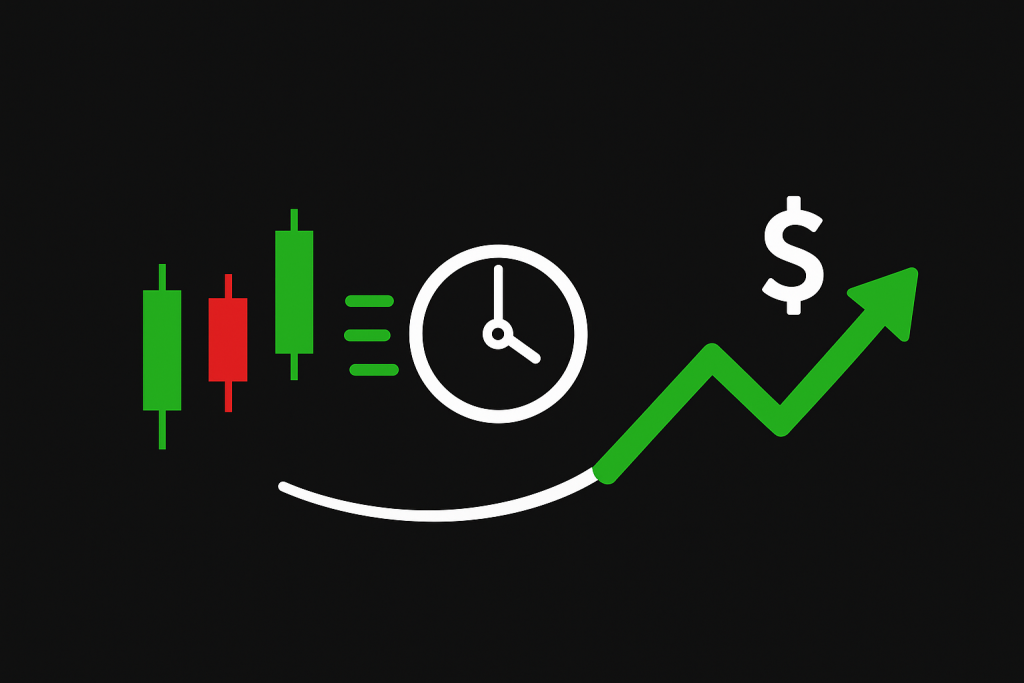
Frequently Asked Questions
Why do scalpers prefer major currency pairs?
Scalpers prefer major currency pairs (like EUR/USD) because they offer the highest liquidity and therefore the tightest spreads. Tight spreads are crucial since scalpers trade frequently for tiny profits, and low transaction costs are necessary for profitability.
What tools are essential for successful Forex scalping?
Essential tools include a broker with fast execution and low spreads, plus technical indicators like Moving Averages, RSI, and Bollinger Bands for analyzing 1-minute charts.
Pros and Cons
| ✓ Pros | ✕ Cons |
| Provides frequent trading opportunities throughout the day | Requires rapid decision-making and constant screen time |
| Reduces long-term market exposure and overnight risks | High trading frequency increases transaction costs |
| Works well in highly liquid market sessions | Slippage can impact profitability during volatility |
| Allows quick compounding of small gains | Emotionally demanding and mentally exhausting |
| Can be automated using fast execution tools | Not suitable for slow platforms or high spread brokers |
Our Insights
Scalping works by capturing small, rapid price movements, offering frequent trading opportunities but demanding precision, discipline, and fast execution. With proper risk control and the right tools, scalping can be effective, though challenging for many traders.
3. Types of Forex Signals used for Scalping
| Signal Type | What It Uses | Strengths | Best For |
| Technical Indicator Signals | MA, RSI, Stochastic, MACD, Bollinger Bands | Clear entry/exit points, easy to automate | Trend-following and momentum scalping |
| Price Action Signals | Candlestick patterns, support/resistance, breakouts | Fast, no lag, works well on M1–M5 | Traders who prefer manual analysis |
| Algorithmic/Automat d Signals | Bots, EAs, real-time scanning algorithms | Ultra-fast execution, emotion-free | High-frequency scalping |
| News & Volatility Signals | Economic events, volatility spikes | Captures sharp movements | Event-based scalping |
| Order Flow & Market Depth Signals | Level II data, liquidity shifts | Highly precise, institutional-style insight | Scalpers wanting micro-move predictions |
| Breakout & Micro Trend Signals | Small breakouts, micro-trends | Great for quick entries before momentum fades | Fast-paced breakout strategies |

Frequently Asked Questions
Which type of scalping signal is the most accurate?
The most accurate scalping signals typically come from manual analysis combining price action with two or three confirming technical indicators (e.g., RSI and Moving Averages). This confluence approach is generally more reliable than relying on a single, purely automated indicator.
Are indicator-based signals enough for successful scalping?
No, indicator-based signals are not enough for successful scalping. They must be confirmed by price action and an understanding of support/resistance levels. Success also relies on fast execution and low transaction costs.
Pros and Cons
| ✓ Pros | ✕ Cons |
| Scalping signals provide fast, actionable trade entries | Requires fast execution and stable internet |
| Many signal types can be automated | Some advanced signal types need paid tools |
| Helps traders avoid emotional decisions | False signals can happen during low liquidity |
| Works well on highly liquid currency pairs | High trade frequency increases spread costs |
| Supports both beginners and advanced technical traders | News-based signals can be risky during high volatility |
Our Insights
Forex scalping signals help traders capture rapid market movements by offering precise, real-time trade guidance. When combined with reliable tools, disciplined execution, and the right strategy, these signals can significantly enhance short-term trading performance and consistency.
4. How to choose a reliable Forex Signal Provider for Scalping
Choosing a trustworthy Forex signal provider is crucial for scalping because the strategy depends on speed, accuracy, and consistent performance. A reliable provider helps traders react instantly to micro price movements and avoid costly delays.
| Criteria | What to Look For | Why It Matters |
| Speed of Delivery | Instant alerts via push, Telegram, or platform integration | Scalping requires fast entries; delays make signals useless |
| Performance Transparency | Verified results on Myfxbook, FX Blue, real track records | Confirms the provider’s legitimacy and consistency |
| Signal Frequency | Multiple signals daily on M1–M5 charts | Ensures enough setups for active scalping |
| Risk Management | Clear SL/TP, risk-per trade instructions | Protects traders from rapid losses |
| Methodology | Explained strategy: indicators, price action, algorithmic | Builds trust and allows strategy alignment |
| Broker/Platform Compatibility | Works with MT4/MT5/cTrader, low-spread brokers | Reduces slippage and improves execution speed |
| User Reviews | Independent, honest feedback on forums and communities | Helps avoid unreliable or misleading providers |
| Demo Testing | Ability to test signals before paying | Confirms real-time accuracy and performance |

Frequently Asked Questions
Should I choose a manual or automated signal provider for scalping?
For scalping, an automated signal provider is generally better due to the speed and precision required for execution. Manual signals often arrive too late. However, ensure the automated system has a verified, low-latency track record.
Can I use any broker with a scalping signal provider?
No, you cannot use just any broker. You need one with ultra-low latency, tight spreads, and fast execution speed to successfully act on scalping signals. A slow or high-cost broker will negate the signal’s potential profit.
Pros and Cons
| ✓ Pros | ✕ Cons |
| Helps traders access fast, high-quality setups | Poor providers may deliver slow or inaccurate signals |
| Reduces time spent on market analysis | High reliance on external guidance |
| Supports disciplined risk management | Some providers exaggerate results or lack transparency |
| Useful for beginners learning fast strategies | Costs can add up if subscription fees are high |
| Enhances precision in high-frequency environments | Inconsistent signals can lead to emotional trading |
Our Insights
Choosing a reliable scalping signal provider requires focusing on verified performance, fast delivery, and strong risk management. With a legit provider and the right trading conditions, traders can improve accuracy, reduce analysis time, and enhance short-term results.
5. Setting up your Trading Platform for Scalping Signals
Setting up your trading platform correctly is essential for applying scalping signals effectively. Because scalping requires rapid execution and precision, your platform must be optimized for speed, clarity, and real-time analysis.
Choose a Fast and Reliable Platform
Platforms like MT4, MT5, and cTrader are popular for scalping due to their low latency, customizable charts, and fast execution. Make sure your platform supports one-click trading to enter and exit trades instantly.
Use Low Timeframe Charts (M1-M5)
Scalping signals rely on ultra-short-term price movements. Set up charts on:
- M1 (1-minute)
- M5 (5-minute)
These timeframes allow you to react instantly to trade alerts and micro-trends.
Add Essential Indicators for Scalping
Depending on your strategy or signal provider, add tools such as:
- Moving Averages
- Bollinger Bands
- RSI or Stochastic
- Support/Resistance levels
Keep the chart clean. Too many indicators result in slow decision-making.
Enable One-Click Trading
Activate one-click or fast trading mode. This feature allows you to open and close trades with a single tap, which is crucial for scalping speed.
Optimize your Chart Layout
Set up a clean layout with:
- Main chart on M1 or M5
- Secondary chart for trend confirmation
- Minimal clutter or unnecessary tools
A simple interface helps you act quickly when signals appear.
Connect to a Low Latency Server
Your broker should offer:
- Low-latency execution
- Fast order processing
- Low spreads
Slippage and delays can ruin scalping performance, so server speed matters.
Enable Real-Time Notifications
Set up instant alerts on your platform, phone, or desktop so you never miss a signal. Tools like Telegram, push notifications, or email alerts keep your response time fast.
Test your Set Up before Live Trading
Practice using demo mode to confirm that:
- Signals arrive instantly
- Your execution is fast
- Indicators match the provider’s instructions
This helps ensure your platform is fully optimized for real-time scalping.
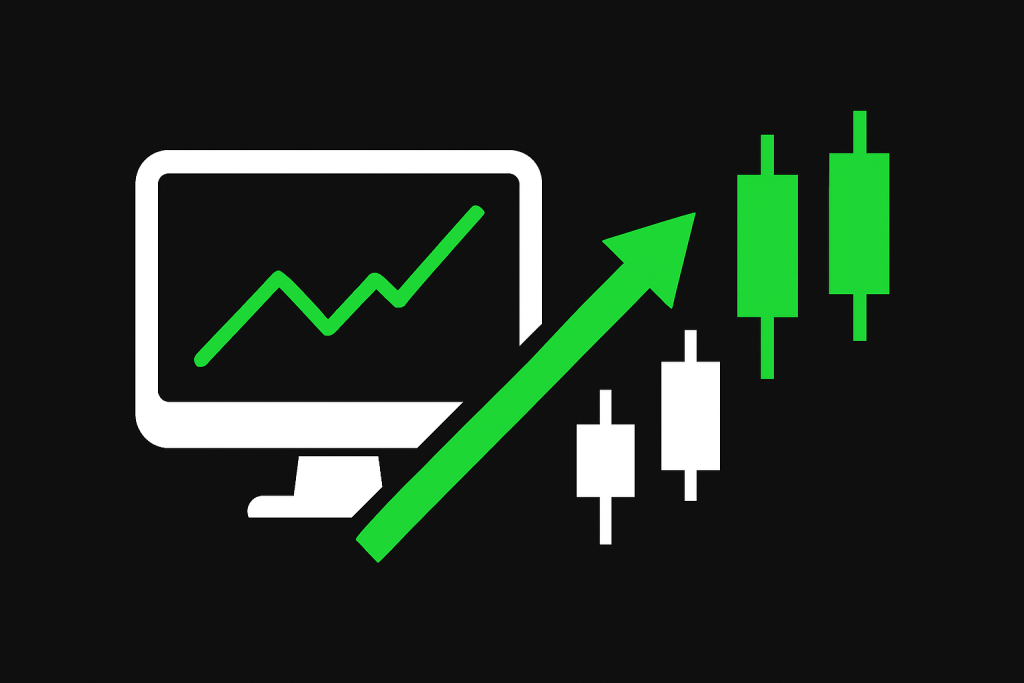
Frequently Asked Questions
What chart timeframes should I use for scalping signals?
The optimal chart timeframes for scalping signals are the 1-minute (M1) and 5-minute (M5) charts. These very short timeframes allow you to receive fast, frequent signals necessary for rapid entry and exit to capture small price moves.
Do I need one-click trading enabled for scalping?
Yes, one-click trading is highly recommended, often essential, for scalping. It allows you to execute trades instantly by bypassing the confirmation window, which is crucial for capturing fast, small price movements before they reverse.
Pros and Cons
| ✓ Pros | ✕ Cons |
| Faster execution improves accuracy when following signals | Requires a strong internet connection for stability |
| Clean, optimized charts reduce analysis time | Poor platform setup can lead to delayed entries |
| Real-time alerts prevent missed opportunities | Too many indicators can overwhelm beginners |
| Low-latency connections minimize slippage | Some platforms require upgrades or VPS for best speed |
| Customization supports both manual and automated scalping | Setup may feel technical for inexperienced traders |
Our Insights
Setting up your trading platform correctly is essential for successful scalping. Fast execution, clean charts, and real-time alerts help traders follow signals accurately. With the right settings, scalpers can increase efficiency, reduce slippage, and improve overall performance.
6. How to Apply Forex Signals in Real-Time Trading
Applying Forex signals in real-time trading is all about speed, precision, and disciplined execution. Scalping signals move quickly, so traders must be ready to act the moment an alert appears.
| Step | What to Do | Why It Matters |
| Monitor Your Signal Source | Keep Telegram, WhatsApp, email alerts, or platform notifications active. | Scalping signals move fast; missing one can cost an opportunity. |
| Confirm Entry on Your Chart | Check entry, SL, TP, and timeframe on M1 M5 charts. | Ensures the price is still valid and reduces bad entries. |
| Use One-Click Execution | Execute orders instantly using one click trading. | Improves accuracy and keeps entries close to the signal price. |
| Apply Correct Risk Management | Set the signal’s recommended SL, TP, and lot size. | Avoids unnecessary losses and keeps trades controlled. |
| Monitor the Trade Closely | Watch momentum, adjust SL if needed, follow updates. | Helps lock in profits and avoid rapid reversals. |
| Exit as Directed | Close when TP is hit or when instructed by the provider. | Timing is crucial for scalping; hesitation reduces profits. |
| Review Trade Results | Track performance, reaction times, and execution quality. | Improves long-term consistency and helps refine your strategy. |

Frequently Asked Questions
How fast should I act on real-time scalping signals?
You should act instantly (ideally within one to two seconds) of receiving a real-time scalping signal. Delays as short as three seconds can cause you to miss the optimal entry or be stopped out prematurely due to the rapid price changes.
Do I need to confirm the signal before entering a trade?
Yes, confirming the signal is essential. You must check the trade against your own market analysis (e.g., price action or support/resistance) to validate the opportunity, reduce risk, and avoid blindly relying on the provider.
Pros and Cons
| ✓ Pros | ✕ Cons |
| Helps traders enter high-probability trades quickly | Requires constant attention to notifications |
| Reduces the need for complex chart analysis | Delayed execution can reduce profitability |
| Supports consistency during fast market movements | Emotionally demanding for beginners |
| Allows traders to follow experienced signal providers | Risk of overtrading if signals are frequent |
| Works well with one click or automated execution setups | Relies heavily on the provider’s accuracy and speed |
Our Insights
Applying Forex scalping signals effectively requires speed, discipline, and precise execution. By confirming entries, using one-click trading, and following clear risk management, traders can capitalize on fast market movements and improve real-time trading consistency.
7. Risk Management Techniques for Scalping with Signals
Effective risk management is essential when using scalping signals because trades happen fast and price movements can reverse within seconds. Proper control of risk helps protect your capital while maximizing the accuracy of real-time signals.
Use Small Portion Sizes
Scalping relies on frequent trades, so each position should be small, usually 0.5% to 2% of your account per trade. Smaller positions reduce the impact of sudden reversals and keep emotions under control.
Always use a Stop-Loss (SL)
Never scalp without a stop-loss. Signals typically include an SL level, which protects you from unexpected volatility. Place it exactly where the provider recommends to keep risk consistent and predictable.
Keep Take-Profit Targets Tight
Scalping aims for small, quick profits. Using small take-profit (TP) levels (such as 5 to 15 pips) helps you exit quickly before the market retraces and wipes out gains.
Avoid Overtrading
Scalping signals come often, but not every signal is worth taking. Overtrading increases transaction costs and emotional stress. Focus only on high-quality setups that match your plan.
Control Spread and Slippage
Choose a low-spread broker and a fast platform. High spreads or slow execution can reduce your profit or even turn winning trades into losses, especially in fast-moving markets.
Set a Daily Loss Limit
Decide how much you are willing to lose per day (e.g., 3%-5% of your account). Once hit, stop trading. This prevents emotional decisions and protects your balance from rapid losses.
Use a VPS for Speed
A Virtual Private Server (VPS) reduces latency and improves execution speed, especially if you use automated or algorithmic scalping signals.
Track you Trades Consistently
Record entries, exits, reaction time, and trade results. This helps identify errors, improve performance, and understand which signals are most reliable.
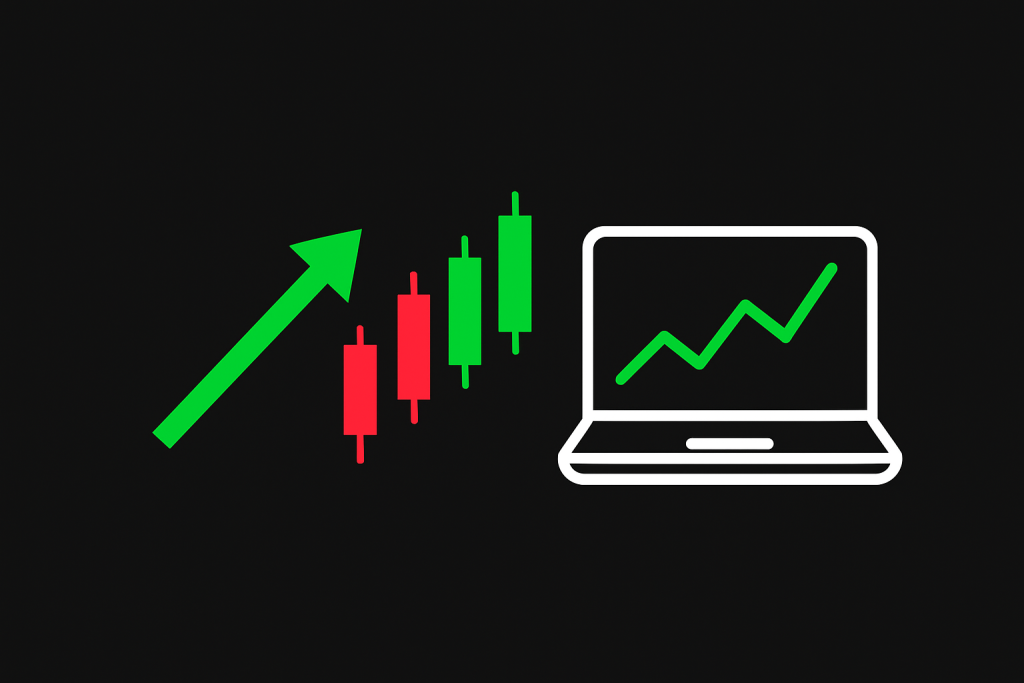
Frequently Asked Questions
Why is risk management essential in scalping with forex signals?
Risk management is essential because scalping’s high frequency and tight profit targets mean a few unexpected losses can wipe out many small gains. Strict stop-losses are crucial to protect capital from rapid, adverse market spikes.
Should I always use a stop-loss when scalping?
Yes, a stop-loss is mandatory when scalping. Due to the extreme market volatility and tight profit targets, a stop-loss is the only way to protect your capital from rapid, unexpected price spikes that can quickly erase your account.
Pros and Cons
| ✓ Pros | ✕ Cons |
| Helps prevent rapid account blowouts during high-frequency trading | Tight stop-losses can trigger prematurely in volatile conditions |
| Improves consistency and discipline when acting on fast signals | Too much caution may reduce potential profits |
| Allows traders to survive losing streaks common in scalping | Requires constant monitoring and fast execution |
| Reduces emotional decision-making under pressure | Position-size limitations may feel restrictive to aggressive traders |
| Supports better long term profitability with controlled risk | Risk tools must be adjusted often because market conditions change quickly |
Our Insights
Effective risk management is crucial when scalping with forex signals, as rapid market moves can quickly amplify losses. Using strict stop-losses, small position sizes, and consistent rules helps protect capital and makes short-term trading more sustainable.
8. Common Mistakes Trader make when using Scalping Signals
| Mistake | Description / Why It Happens |
| Entering Trades Too Slowly | Hesitation turns high probability signals into missed opportunities. |
| Ignoring Stop-Loss Levels | Removing or moving SLs exposes traders to larger losses than necessary. |
| Overtrading Every Signal | Taking low-quality or every signal leads to fatigue, sloppy execution, and unnecessary losses. |
| Using High-Spreads or Slow Brokers | Slow execution or wide spreads reduces profitability and accuracy of scalping signals. |
| Trading During Low Liquidity Times | Signals are less reliable when spreads widen or volatility is low (e.g., after market close). |
| Not Back-Testing or Evaluating the Provider | Blindly following untested signals increases the risk of losses due to poor performance. |
| Increasing Lot Sizes After a Loss | Emotional revenge trading magnifies risk and accelerates drawdowns. |
| Not Monitoring Economic News Events | High-impact news can create whipsaws that invalidate scalping signals. |
| Using Too Many Indicators | Waiting for multiple confirmations delays entries, reducing scalping effectiveness. |
| Ignoring Risk Management | Over-leveraging or risking too much per trade can quickly deplete capital |

Frequently Asked Questions
What is the most common mistake when using scalping signals?
The most common mistake is failing to use a tight stop-loss or delayed execution. Scalping requires instant action; hesitation or high market risk due to a missing stop-loss will quickly lead to significant losses that outweigh small gains.
Do traders need a strict strategy when using scalping signals?
Yes, a strict strategy is mandatory. It provides the discipline needed to consistently follow the signals, manage the high frequency of trades, and enforce predefined stop-losses and profit targets to control rapid risk exposure.
Pros and Cons
| ✓ Pros | ✕ Cons |
| Helps traders avoid losing money due to preventable errors | Hard to recognize mistakes while trading in real time |
| Improves discipline and execution speed | Requires continuous self-evaluation and adjustment |
| Builds confidence when following scalping signals | Some mistakes only become clear after losses |
| Enhances long-term consistency and accuracy | Emotional habits can be difficult to break |
| Encourages more thoughtful trade management | Avoiding mistakes doesn’t guarantee profitability, only reduces risk |
Our Insights
Understanding common scalping-signal mistakes helps traders avoid timing errors, overtrading, and emotional decisions. By improving discipline, execution, and risk control, traders can use scalping signals more effectively and strengthen long-term trading performance.
9. Tips to Improve Success when using Forex Scalping Signals
Use a Fast, Low-Latency Trading Platform
- Scalping requires instant execution. Choose platforms like MT4/MT5 or cTrader with minimal delays.
Trade Only During High Liquidity Sessions
- London, New York, or Tokyo sessions offer tighter spreads and more reliable signal performance.
Stick to the Recommended Stop-Loss and Take-Profit
- Scalping signals rely on strict risk-to-reward setups. Adjusting SL/TP often harms results.
Avoid Taking Every Signal
- Filter out low-quality setups based on volatility, news events, or poor spread conditions.
Keep Position Sizes Small
- Risk 1% or less per trade to avoid large drawdowns caused by frequent trades.
Use a Broker with Tight Spreads and Fast Execution
- Even a 1–2 pip difference affects scalping accuracy.
Track Your Performance Daily
- Monitor entries, timing, spreads, and win rate to identify weaknesses.
Don’t Trade During High-Impact News Releases
- News spikes may invalidate scalping signals within seconds.
Use Alerts and Automation Where Possible
- Trade managers, notifications, or copy-trade tools help reduce reaction time.
Maintain Discipline and Avoid Emotional Trading
- Stick to the plan; don’t chase trades or make impulsive entries.

Frequently Asked Questions
Do I need a fast trading platform to succeed with scalping signals?
Yes, a fast trading platform is absolutely essential. You need low latency and instant execution to successfully act on signals. Slow platforms will cause price slippage, negating the tight profit targets of scalping.
Why is risk management important for scalping signals?
Risk management is essential because scalping’s high trade frequency and tight profit targets mean a few large, uncontrolled losses can quickly eliminate many small gains. Strict stop-losses are vital to protect capital from rapid market moves.
Pros and Cons
| ✓ Pros | ✕ Cons |
| Improves accuracy and consistency when following scalping signals | Requires constant attention and quick decision-making |
| Helps reduce slippage and poor entries | Demands a fast broker and low-latency setup |
| Strengthens discipline and emotional control | Can be overwhelming for beginners |
| Supports better trade timing and selection | Strict discipline is needed to avoid overtrading |
| Boosts long-term profitability through structured execution | Market conditions can still affect the signal’s effectiveness |
Our Insights
Improving success with scalping signals requires fast execution, disciplined risk management, and smart filtering of trades. By focusing on timing, liquidity, and technology, traders can increase accuracy, reduce mistakes, and maximize short-term trading efficiency.
10. Backtesting and Reviewing Scalping Signals for Better Results
Backtesting involves testing your scalping signals on historical price data to see how they would have performed in past market conditions. It helps you understand win rate, average risk-to-reward, drawdown, and overall consistency before risking real money.
Reviewing involves analyzing your executed trades (entries, exits, timing, spreads, and slippage) to identify patterns, mistakes, or strengths. This process helps refine your approach and improve the accuracy of future scalping decisions.

Frequently Asked Questions
Why is backtesting important for scalping signals?
Backtesting is vital to verify the signal’s historical profitability and confirm the strategy works under various past market conditions. It ensures the signal’s logic is sound before risking any real capital in live trading.
How often should I review my scalping trades?
You should review your scalping trades after every trading session or daily. The high volume requires frequent checking to identify immediate execution errors, check slippage, and ensure strict adherence to your predefined stop-loss rules.
Pros and Cons
| ✓ Pros | ✕ Cons |
| Helps validate the reliability of scalping signals | Time-consuming to test and analyze accurately |
| Identifies weaknesses in timing, spreads, or execution | Historical data may not reflect future volatility |
| Improves long-term consistency and discipline | Manual backtesting can include human error |
| Reduces emotional trading and guesswork | Requires access to quality data and tools |
| Allows adjustments before risking real money | Over-optimized results can create false confidence |
Our Insights
Backtesting and reviewing scalping signals strengthen decision-making, uncover weaknesses, and build confidence before trading live. By analyzing performance, timing, and conditions, traders refine their approach and improve long-term consistency with scalping strategies and signals.
Top 10 Best Forex Brokers that Provide Trading Signals – A Direct Comparison
What Real Traders Want to Know!
Q: How should I adjust forex signals to fit the fast pace of scalping? – James F.
A: You must adjust signals for M1/M5 timeframes, demand tight stop-losses, and ensure the entry point is executed instantly via a low-latency broker. High-frequency scalping requires immediate action on every signal detail.
Q: Can I rely solely on forex signals for scalping, or do I need additional tools? – Emily R.
A: No, sole reliance is dangerous. You need a fast broker with low latency, a strict risk management plan, and the ability to confirm signals using basic price action or support/resistance levels for successful scalping.
Q: How do I manage risk when using forex signals for scalping? – Sarah T.
A: Manage risk by setting mandatory, tight stop-losses on every trade. Use small position sizing, risking no more than 1% of your capital per trade, and strictly adhere to these rules to protect against rapid market reversals.
Pros and Cons
| ✓ Pros | ✕ Cons |
| Fast Entry Guidance | Requires Extremely Fast Execution |
| Reduces Analysis Time | High Dependence on the Provider |
| Useful for New Traders | Not Ideal in Low Liquidity |
| Enhances Discipline | Higher Transaction Costs |
| Can Improve Accuracy | Emotionally Demanding |
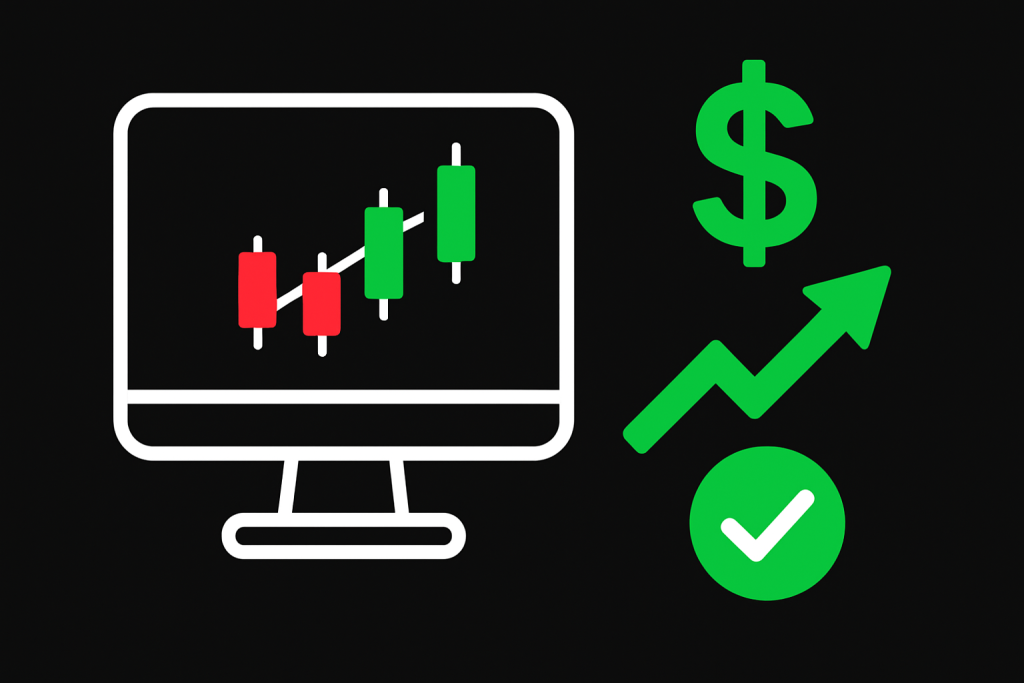
In Conclusion
Applying forex signals for scalping requires fast execution, strict discipline, and reliable signal providers. By combining quick decision-making with risk control and high-liquidity trading times, traders can use signals more effectively and improve short-term trading performance.
You Might also Like:
- Forex Trading Signal Providers
- Best VIP forex signals providers on Telegram
- Best VIP forex signals providers on Whatsapp
- IC Markets Review
- OANDA Review
- Forex.com Review
Frequently Asked Questions
How do I apply a scalping signal as soon as it arrives?
You must use a broker with ultra-low latency and enable one-click trading on your platform (like MT4/MT5). Execute the trade instantly (within 1-2 seconds) to avoid price slippage and capture the small profit window.
Do I need to confirm the signal with indicators?
Yes, it is highly recommended to confirm a signal with indicators. Use one or two non-lagging indicators (like RSI or Stochastic) to confirm the trade’s momentum and validity, reducing the risk of relying solely on one source.
What timeframes work best for using scalping signals?
The optimal chart timeframes for scalping signals are the 1-minute (M1) and 5-minute (M5) charts. These very short timeframes allow you to receive fast, frequent signals necessary for rapid entry and exit to capture small price moves.
Should I always follow the exact stop-loss and take-profit levels?
Yes, you should always follow the exact SL and TP levels. These levels maintain the provider’s intended risk-reward ratio and are crucial for disciplined risk management. Only adjust them if you have a proven, backtested personal strategy.
How important is speed when applying scalping signals?
Speed is absolutely critical; it is the most important factor in applying scalping signals. Trades must be executed instantly (within 1-2 seconds) to avoid price slippage and ensure the tiny profit target is actually achievable.
Do I need a special broker for scalping?
Yes, you need a specialized ECN/STP broker. Scalping demands ultra-low spreads and minimal commission to ensure profitability on small gains. Fast, reliable execution and low latency are also essential features.
Can I use scalping signals during news events?
No, it is highly risky and not recommended. Major news causes extreme volatility, wide spreads, and high slippage, making it impossible to guarantee a scalping signal’s target or prevent major losses due to missed stop-losses.
Should I take every scalping signal provided?
No, you should not take every signal. You must filter trades based on your own market analysis, checking for strong support/resistance levels or impending news. Only take high-probability signals that align with your strategy.
How much should I risk per trade when using scalping signals?
You should risk no more than 1% of your total trading capital per scalping trade. Given the high frequency and low profit target of scalping, this small percentage is crucial for protecting your account from rapid, consecutive losses.
What currency pairs are best for applying scalping signals?
Major currency pairs are best, specifically EUR/USD, GBP/USD, and USD/JPY. They offer the highest liquidity and tightest spreads, which is crucial for minimizing transaction costs and ensuring fast execution of high-frequency scalping signals.



















